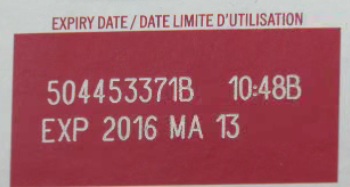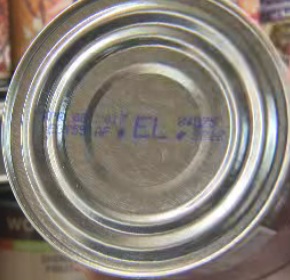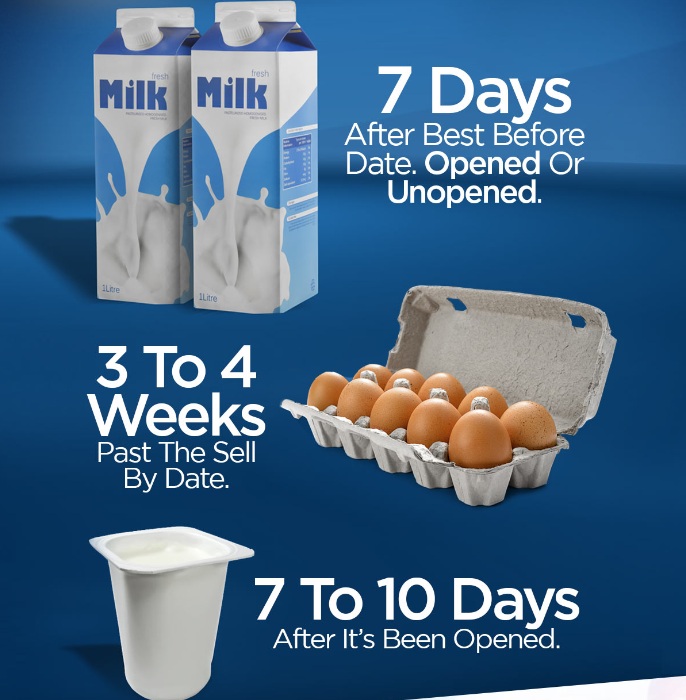Consumers are throwing away thousands of dollars and kilograms of food each year simply because they misunderstand what the best before date actually means.

A 2013 study from Harvard Law School and the Natural Resources Defense Council concluded that the dates printed on packaged foods serve to confuse consumers, leading them to trash their food and money.
Food waste costs the Canadian economy an estimated $31 billion a year. Much of that waste starts with consumers tossing out food that’s still good to eat.
Lindsay Coulter, known as the “Queen of Green” of the David Suzuki Foundation, says “about a third of all the food produced in the world” is wasted. She attributes a vast majority of that waste to consumers believing the best before date means food has gone “bad that day.”
“It’s challenging for consumers,” said food scientist Dr. Gary Sandberg.
WATCH: Professor, Keith Warriner, food scientist from University of Guelph’s department of food science, explains best before dates and food labels.
READ MORE: Food waste at record levels as other Canadians go hungry
What is a best before date?
Best before dates relate to “food quality,” explains Sandberg, who says the label has nothing to do with “food safety.” They are printed on products with a shelf life of 90 days or less.
If you open up your fridge and find a container of yogurt with a best before date that has passed, don’t be so quick to toss it out. If it has been stored properly and is unopened, Sandberg, says it’s still safe to eat. Those best before dates display peak flavour. Once the date has passed, he says, the food may lose some of its freshness and flavour. Once opened, the food’s shelf life may also change.

“As long as it’s sitting in the package, then it is not going to be a food safety risk, it’s going to be more of a loss of quality.”
Sanbderg says the best before date is no longer valid if a package is opened or if the food is frozen. If a food is properly frozen two days before its best before date, it should be edible for another two days from the start of the thawing process.
“As soon as you open a package then of course it becomes exposed to the environment. Then it can become contaminated with virtually anything,” he said.
What is an expiration date?
Expiration dates, however, tell consumers the last day a product is safe to consume. These foods are clearly marked with “EXP” or “Expiry.” After that date has passed, throw it out as the manufacturers cannot guarantee that the food’s nutritional composition remains stable.

The Canadian Food Inspection Agency outlines only five types of products that need to have the expiration date label:
· Baby formula and other human milk substitutes
· Nutritional supplements
· Meal replacements
· Pharmacist-sold foods for very low-energy diets
· Formulated liquid diets
Canned food items
What may come as more of a shock to consumers, canned items don’t need to have a best before date at all. Canned items, as long as they are intact and stored in a moderate temperature, have an almost indefinite shelf life, but there may be a change in quality and texture.
The numbers imprinted on the top or bottom of the can, represent a manufacturing code used to track the product. The code designates the date the product was packaged.
“In most cases a can will have a warranty of two years,” says Sandberg. “After that two-year period no one is going to guarantee that the can is going to stay together.”

How much longer will food last after the best before date?
A non-profit supermarket in Boston sells outdated food. Daily Table, which opened in June 2015, sells food that would have otherwise been thrown away at an affordable price. In Canada, Quest Food Exchange sells food that is close to or past its best before date at affordable prices. Quest offers food from every branch of the local food industry that might otherwise go to waste. The company follows “the Durable Life Information on Food Products fact sheet and the Acts and Regulations administered by the Canadian Food Inspection Agency.
This is how long some foods can last past the best before date:
- Gas prices in Ontario, Quebec to jump to highest level in 2 years: analyst
- Shoppers faces proposed class action over claims company is ‘abusive’ to pharmacists
- What’s going on with the Cybertruck? Tesla seems to have halted deliveries
- Most Canadian youth visit dentists, but lack of insurance a barrier

Sandberg says don’t throw out your common sense because ultimately “if it looks bad, if it smells bad, chances are it is.”
He also recommends having your refrigerator 1-2 degrees Celsius colder (not below freezing) because it could extend the shelf life of most products, for milk, for example by 50 per cent. He says if you keep the milk at the back for the fridge, you will likely gain an additional one to two days. If you have questions about your eggs, Sandberg suggests the “float test.” If the egg floats (due to gas production inside) it has gone bad; if it sinks, it’s safe to consume.
Health Canada does not recommend eating anything after the best before date. The Canada Food Inspection Agency states you can buy and eat foods after the best before date has passed. Generally, if the food changes colour or appearance, or develops a bad smell, it is no longer safe to eat.


Comments